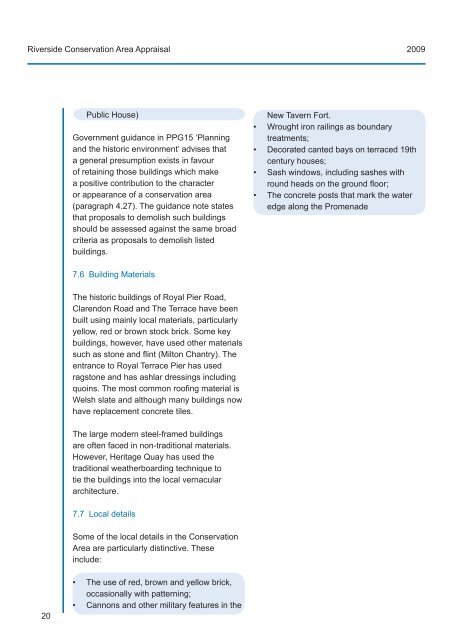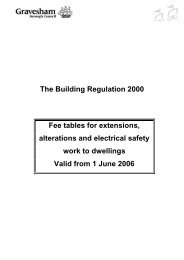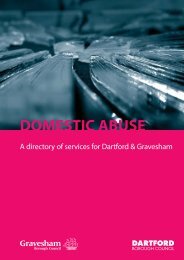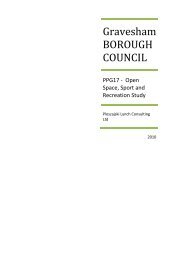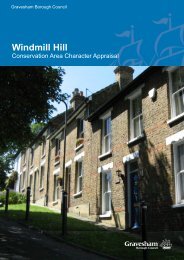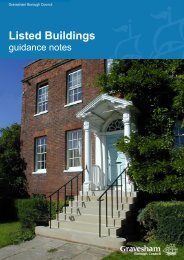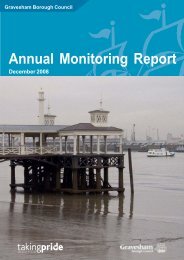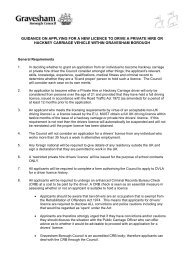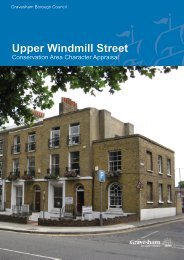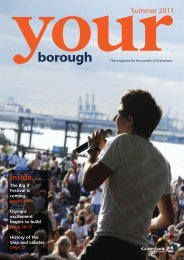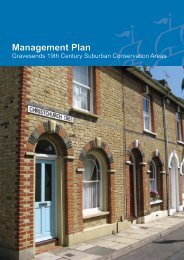gravesend riverside conservation area - Gravesham Borough Council
gravesend riverside conservation area - Gravesham Borough Council
gravesend riverside conservation area - Gravesham Borough Council
You also want an ePaper? Increase the reach of your titles
YUMPU automatically turns print PDFs into web optimized ePapers that Google loves.
Riverside Conservation Area Appraisal 2009<br />
Public House)<br />
Government guidance in PPG15 ‘Planning<br />
and the historic environment’ advises that<br />
a general presumption exists in favour<br />
of retaining those buildings which make<br />
a positive contribution to the character<br />
or appearance of a <strong>conservation</strong> <strong>area</strong><br />
(paragraph 4.27). The guidance note states<br />
that proposals to demolish such buildings<br />
should be assessed against the same broad<br />
criteria as proposals to demolish listed<br />
buildings.<br />
New Tavern Fort.<br />
• Wrought iron railings as boundary<br />
treatments;<br />
• Decorated canted bays on terraced 19th<br />
century houses;<br />
• Sash windows, including sashes with<br />
round heads on the ground floor;<br />
• The concrete posts that mark the water<br />
edge along the Promenade<br />
7.6 Building Materials<br />
The historic buildings of Royal Pier Road,<br />
Clarendon Road and The Terrace have been<br />
built using mainly local materials, particularly<br />
yellow, red or brown stock brick. Some key<br />
buildings, however, have used other materials<br />
such as stone and flint (Milton Chantry). The<br />
entrance to Royal Terrace Pier has used<br />
ragstone and has ashlar dressings including<br />
quoins. The most common roofing material is<br />
Welsh slate and although many buildings now<br />
have replacement concrete tiles.<br />
The large modern steel-framed buildings<br />
are often faced in non-traditional materials.<br />
However, Heritage Quay has used the<br />
traditional weatherboarding technique to<br />
tie the buildings into the local vernacular<br />
architecture.<br />
7.7 Local details<br />
Some of the local details in the Conservation<br />
Area are particularly distinctive. These<br />
include:<br />
20<br />
• The use of red, brown and yellow brick,<br />
occasionally with patterning;<br />
• Cannons and other military features in the


